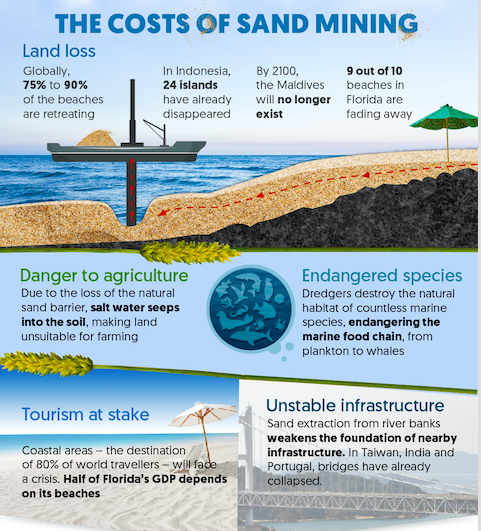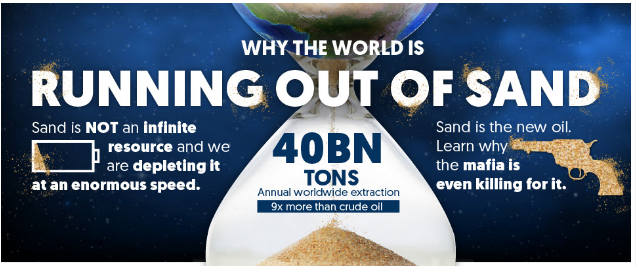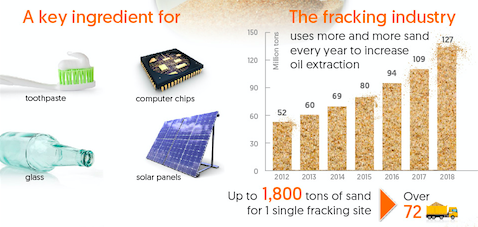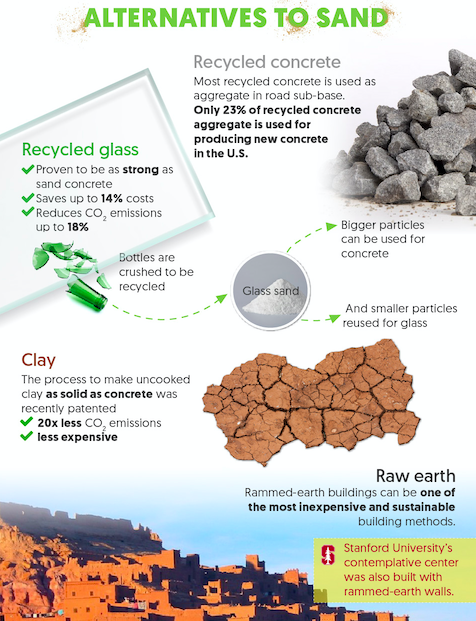Running out of sand? How can that be?
As it turns out, so many beaches and sea and lake beds are being mined for sand that it is becoming an environmental crisis in some parts of the world. We’ve teamed up with Trade Machines, a company that advocates recycling and helps recycle big industrial machines, to raise awareness about this unexpected but very real environmental threat.
You probably don’t give sand a second thought, since it seems so abundant. But a surprising number of everyday items – like toothpaste, many electronic devices, and home construction materials – consist of sand.
You know what else uses a lot of sand? Fracking, that environmentally destructive practice of injecting materials far underground to fracture rocks that contain natural gas. Construction uses a lot of sand, too. In fact, Trade Machines’ research shows that “The No. 1 purpose of sand extraction is construction.” An average-sized family house requires about 200 tons of sand, mostly in the concrete used in building its foundation.
If you’ve been on a beach, you probably think that the amount of sand on earth is infinite.
But that’s not true.
There is actually a limited supply of sand on earth and under water.
Because tons and tons are required for building and concrete making, we use so much sand that it is now the second most extracted resource on Earth after water.
Not all types of sand are equal. Desert sand is too round and unstable for building. Marine sand, however, is much better. That’s why sand mining companies are extracting sand from beaches.
Why Is Sand Mining An Environmental Problem?
Islands in certain regions of the world have already disappeared due to over-mining.
In other areas, beaches are literally being stolen as their sand is mined.
Sand has become so valuable that the black market in sand is now booming. Illegal organizations in countries with coasts do not follow environmental regulations to mine sand carefully, endangering coral reefs and marine animals and their habitats.
How To Avoid Running Out of Sand
√ The number one solution to over-mining is to use a lot less sand. It takes hundreds of years for stones to become sand, notes Trade Machines, so we can’t count on sand that’s stolen today to naturally replenish tomorrow.
√ A second solution is to recycle items that are made from sand, like glass and concrete, as Trade Machines shows in this graphic.
√ A third solution is to pay closer attention to where and how sand is being mined. If you are at a beach and notice a barge parked and mining sand, find out if the miners have a permit and are following environmental regulations.
What Can You Do? Share This Post and Infographic!
Please help spread the word that sand mining poses serious threats to the environment.
Share this blog post on your social media along with this excellent, comprehensive infographic from Trade Machines.
NOTE: Collaborations with companies like Trade Machines help us bring you the excellent content you desire at no cost to you. Our editorial opinions remain our own. Thanks.















